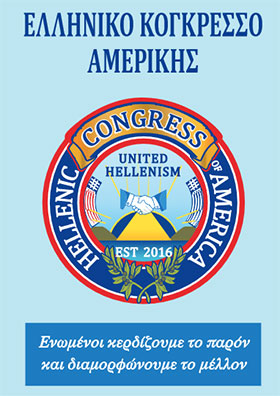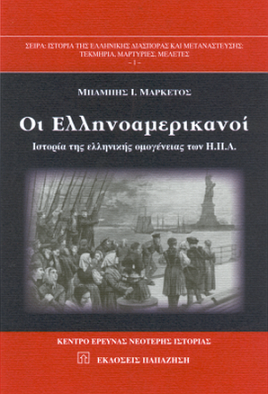Greek-American scientist will receive his award by President Obama during a public ceremony at the White House early 2016.

The Greek-American scientist will receive his award by President Obama during a public ceremony at the White House early 2016. has announced that Paul Alivisatos, director of the Lawrence Berkeley National Laboratory (Berkeley Lab), award-winning chemist and internationally recognized authority on the fabrication of nanocrystals and their use in solar energy applications, has won the National Medal of Science, the nation’s highest honor for lifetime achievement in fields of scientific research.
Alivisatos, 56, who has been hailed as “one of the fathers of nanoscience” for his ground-breaking research in quantum dots and other artificial nanostructures, holds appointments with the University of California Berkeley as the Samsung Distinguished Chair in Nanoscience and Nanotechnology, and is the Director of the Kavli Energy NanoSciences Institute at Berkeley. He is also a scientific founder of two prominent nanotechnology companies, Nanosys and Quantum Dot Corp.
Paul Alivisatos was born in Chicago on November 12, 1959. He lived there until the age of 10, when his family moved to Athens, Greece, where he would remain through high school. Alivisatos has said of his years in Greece that it was a great experience for him because he had to learn the Greek language and culture then catch up with the more advanced students.
“When I found something very interesting it was sometimes a struggle for me to understand it the very best that I could,” he has said of that experience. “That need to work harder became an important motivator for me.”
Alivisatos returned to the United States to attend the University of Chicago where in 1981 he earned his B.A. in Chemistry with honors. He attended graduate school at UC Berkeley, graduating with a Ph.D. in Chemical Physics in 1986. He went to AT&T Bell Labs as a post-doctoral fellow and returned to Berkeley in 1988 as an assistant professor of chemistry. He was promoted to associate professor in 1993 and full professor in 1995. He served as UC Berkeley’s Chancellor’s Professor from 1998 to 2001, and added an appointment as a professor of materials science and engineering in 1999.
Alivisatos’ affiliation with Berkeley Lab began in 1991 when he joined the staff of the Materials Sciences Division. He rose to become director of that division in 2002, a position he held for six years. In 2001 he was named to head a new U.S. Department of Energy center for nanoscience called the Molecular Foundry, which is hosted at Berkeley Lab. He continued to direct research at the Foundry until 2005. From 2005 to 2007 he served as Berkeley Lab’s Associate Laboratory Director for Physical Science.
Alivisatos was appointed to lead Berkeley Lab’s Materials Sciences Division by then Lab director Charles Shank who hailed him as “one of the fathers of nanoscience.” One of the first to publish scientific results in the field, Alivisatos went on to publish well over 285 papers. He is widely recognized as the person who altered the nanoscience landscape with the creation of rod-shaped semiconductor nanocrystals that could be stacked to create nano-sized electronic devices. Until then, semiconductor nanocrystals came in one shape only, that of a sphere. He followed that milestone with numerous other technical breakthroughs that advanced nanotechnology, including the creation of a new generation of hybrid solar cells that combined nanotechnology with plastic electronics.










Σχόλια Facebook